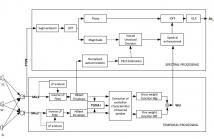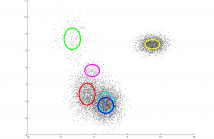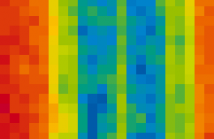ICASSP is the world's largest and most comprehensive technical conference on signal processing and its applications. It provides a fantastic networking opportunity for like-minded professionals from around the world. ICASSP 2016 conference will feature world-class presentations by internationally renowned speakers and cutting-edge session topics.
- Read more about NONCONVEX COMPRESSIVE SENSING RECONSTRUCTION FOR TENSOR USING STRUCTURES IN MODES
- Log in to post comments
poster.pdf
- Categories:
 1 Views
1 ViewsWe address the transmission of bivariate Gaussian sources using analog Joint Source Channel Coding (JSCC). The analog mappings are specifically designed to exploit the correlation between the source symbols. A parametric mapping based on sinusoidal functions is proposed and its performance is compared to that of the optimal non parametric mappings and other applicable analog JSCC mappings, and also to the theoretical bound.
- Categories:
 12 Views
12 Views- Read more about Recursive versions of the Levenberg-Marquardt reassigned spectrogram and of the synchrosqueezed
- Log in to post comments
- Categories:
 12 Views
12 Views
- Read more about A NEW TIME-FREQUENCY APPROACH FOR UNDERDETERMINED CONVOLUTIVE BLIND SPEECH SEPARATION
- Log in to post comments
we present a new Time-Frequency approach
for recovering sources’ contribution to two convolutive
mixtures. The separation task is performed on two steps:
Each mixture is clustered into Voiced/Unvoiced frames, and
then the predominant source in each time frequency bin is
identified through a specific weight function which is based
on sources’ excitation characteristics extraction. We investigate
the performance of the proposed approach in the underdetermined
context using objective quality measures.
- Categories:
 16 Views
16 Views- Read more about A METROPOLIS-WITHIN-GIBBS SAMPLER TO INFER TASK-BASED FUNCTIONAL BRAIN CONNECTIVITY
- Log in to post comments
poster.pdf
- Categories:
 7 Views
7 Views
Learning parameters from voluminous data can be prohibitive in terms of memory and computational requirements. We propose a "compressive learning" framework where we first sketch the data by computing random generalized moments of the underlying probability distribution, then estimate mixture model parameters from the sketch using an iterative algorithm analogous to greedy sparse signal recovery. We exemplify our framework with the sketched estimation of Gaussian Mixture Models (GMMs).
- Categories:
 10 Views
10 ViewsTo meet the ever-growing mobile data traffic, network spatial densification
with various low-power nodes in addition to the conventional high-power macro base
stations (BS), a.k.a. heterogeneous network (HetNet), is regarded as one key
enabling solution. Due to the unplanned nature, HetNets are very irregular and
severe interference can happen without judicious designs of the user association
rules. Conventional maximum downlink (DL) signal-to-interference-plus-noise ratio
(SINR) association rule, on the other hand, can not fully release the traffic
- Categories:
 5 Views
5 Views- Read more about Low-Complexity Recursive Convolutional Precoding for OFDM-based Large-Scale Antenna Systems
- Log in to post comments
Large-scale antenna (LSA) has gained a lot of attention recently since it can significantly improve the performance of wireless systems. Similar to multiple-input multiple-output (MIMO) orthogonal frequency division multiplexing (OFDM) or MIMO-OFDM, LSA can be also combined with OFDM to deal with frequency selectivity in wireless channels. However, such combination suffers from substantially increased complexity
- Categories:
 1 Views
1 Views
- Read more about Decreasing the Measurement Time of Blood Sugar Tests using Particle Filtering
- Log in to post comments
- Categories:
 7 Views
7 Views